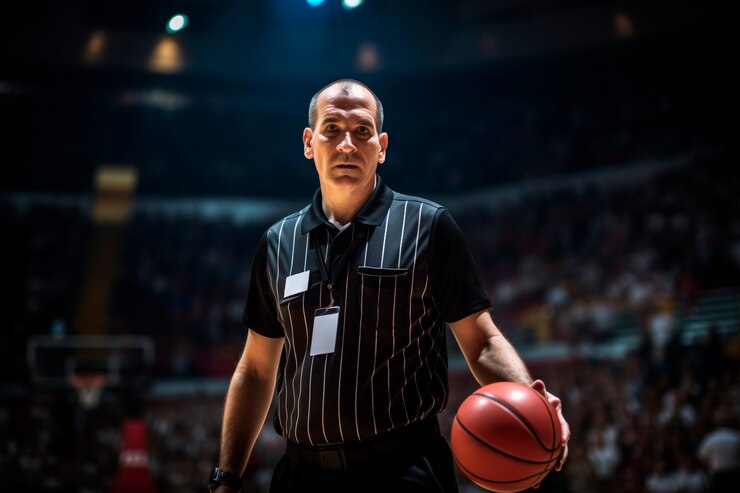Referees lead basketball games using straightforward and quick movements instead of words. These movements tell players and fans the rules and decisions during the loud and busy game. These signals are a language unto themselves. They require players, coaches, and fans alike to understand their meaning for a seamless basketball experience.
Understanding the violation signals
Violations are crucial in maintaining the integrity of the game. The referees’ signals provide immediate understanding without a word spoken.
Travelling
The official blows the whistle to stop the game, then spins an arm with an open hand. It shows that play has been interrupted, and the ball needs to be passed to the other team.
Double dribble
If a player dribbles incorrectly, it is a double dribble. The referee calls it by moving both hands up and down, palms down. It tells everyone that the player broke the dribbling rules, and the other team gets the ball.
Three-second violation
Staying in the critical area too long is a violation. The referee raises three fingers to explain this to players and spectators. It helps everyone understand the need to keep the game moving within the paint.
Five-second inbound violation
Taking too long to pass the ball inbounds can cost the team possession. The referee clarifies this by showing all five fingers and then closing the hand. It signals the need for swifter decision-making during inbounds.
Ten-second backcourt violation
Teams need more time to move the ball across the court. The referee communicates this urgency by displaying all ten fingers. It encourages teams to keep up the pace and advance the ball quickly.
Fouls and free throws
Fouls can turn the tide of a game, and referees must communicate them effectively to maintain fair play and safety.
Personal foul
The referee indicates a personal foul by showing the offender’s number and tapping their wrist. It is a sign that demands player attention and acknowledges physical contact that crosses the boundaries of fair play.
Technical foul
For non-physical violations like misconduct, the referee forms a ‘T’ with both hands. This distinguishes it from other signals and indicates a breach of conduct, demanding a higher standard of sportsmanship.
Shooting foul
When a shot is disrupted by a foul, the referee simulates a shooting action and then taps their head. It indicates free throws are due, giving the fouled player a chance to score in a high-pressure moment.
Blocking and charging fouls
Maintaining a fair balance between offence and defence is crucial. The referees’ signals provide quick clarification on defensive errors.
Blocking foul
A blocking foul, where a defender has not set their position, is indicated by crossed arms. It reminds defenders of the importance of establishing a place without impeding an opponent unfairly.
Charging foul
An offensive charge is marked by the referee’s punching motion into an open palm. It is a caution to offensive players to control their movement and avoid forceful contact.
Exceptional circumstances
Referees must also communicate the more nuanced aspects of the game, such as possession changes and timeouts.
Jump ball
A jump ball call is signified by both thumbs up, signalling players to ready themselves for a contest of timing and skill to gain possession.
Timeout
A timeout, a strategic pause in the action, is signalled by the referee with a clear ‘T’ shape made by both hands. This deliberate signal indicates a break in play for teams to regroup.
Conclusion
The referee’s signals are integral to basketball’s rhythm and discipline. Understanding these gestures gives a more profound appreciation and connection with the game. As players and enthusiasts, recognizing these signals is akin to learning a new language, one that brings us closer to the heart of basketball.
So, next time you watch a game, you will be fluent in the silent yet expressive language that guides the sport. Engage with the game, and let’s spread the word about the beauty of basketball’s silent commands!
